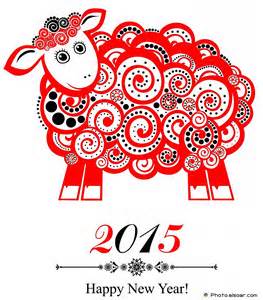 This year the Chinese New Year, also called the Spring Festival, begins on February 19th. It is the longest celebration on the Chinese calendar, and many consider it to be the most important holiday in China. The belief behind the holiday is that people born on the corresponding years of animals will take on some of the personality traits of the animal. For example, people who are born this year, the year of the sheep, will be polite, filial, clever, and kind-hearted.
This year the Chinese New Year, also called the Spring Festival, begins on February 19th. It is the longest celebration on the Chinese calendar, and many consider it to be the most important holiday in China. The belief behind the holiday is that people born on the corresponding years of animals will take on some of the personality traits of the animal. For example, people who are born this year, the year of the sheep, will be polite, filial, clever, and kind-hearted.
In preparation for the New Year, the Chinese clean their homes in what is called “sweeping the dust.” This form of “spring cleaning” represents getting rid of old things, saying goodbye to the past year, and welcoming in the New Year. Chinese will put up banners called spring couplets affixed to a door frame, and they collect phrases of best wishes written on red paper with black ink, believing that this will keep evil spirits away. Families decorate their houses with New Year paintings to create a prosperous environment for the Spring Festival. Themes for the paintings include flowers, birds, golden roosters, oxen, ripe fruit, and historical stories that symbolize wishes for a bountiful harvest and happy life.
The New Year’s Eve dinner is called Reunion Dinner and is considered the most important meal of the year since several generations of the family come together to celebrate. The last course of the meal includes eating a fish and leaving some leftover, as this represents abundance. During the Chinese New Year, people eat long noodles symbolizing long life and dumplings to represent more prosperity. Families then watch the Spring Festival Gala on television to ring in the New Year. This program includes performances from traditional and contemporary singers, dancers, acrobats, and as well as magic demonstrations.
The Chinese literally ring in the New Year when they go to large squares or temples. Bells start ringing at midnight as it is believed that this will ward off bad luck and bring prosperity. After the sounding of the bells, cities set off fireworks all across the nation.

